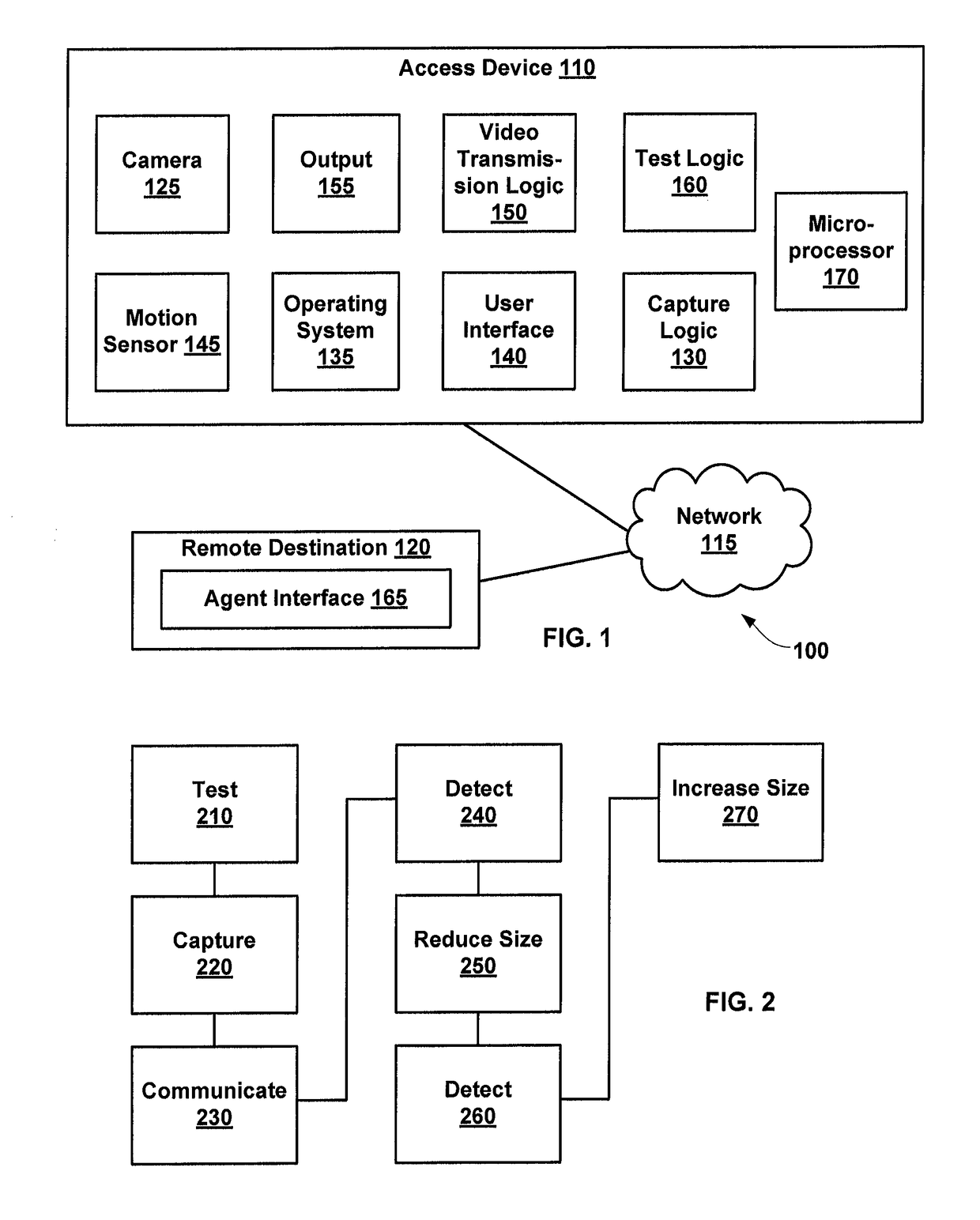Image quality management
a technology of image quality management and image data, applied in the field of communication, can solve the problems of reducing image resolution, affecting the quality of image data, so as to reduce the data size of the sequence of images, increase the movement of the camera, and increase the effect of movemen
- Summary
- Abstract
- Description
- Claims
- Application Information
AI Technical Summary
Benefits of technology
Problems solved by technology
Method used
Image
Examples
Embodiment Construction
[0012]As used herein, the term “data size” of a video is specifically to mean “the amount of data (e.g., number of bytes) used to communicate the video in real-time from a source to a remote destination over a communication network.” The data size may be expressed per a unit of time such as Mbits / second.
[0013]As used herein, the term “communication channel” is meant to mean a digital or analog channel for communicating between two endpoints. A communication channel can include wired and / or wireless segments. For example, a communication channel can include a wireless link between a smartphone and a cellular tower, a wired link between the cellular tower and an internet access point and a TCP / IP link between the access point and a final destination.
[0014]As used herein, the term “bandwidth threshold” is meant to mean a data size that can be communicated through a specific communication channel without a reduction in the data size and / or a reduction in the quality of the data. A bandw...
PUM
 Login to View More
Login to View More Abstract
Description
Claims
Application Information
 Login to View More
Login to View More - R&D
- Intellectual Property
- Life Sciences
- Materials
- Tech Scout
- Unparalleled Data Quality
- Higher Quality Content
- 60% Fewer Hallucinations
Browse by: Latest US Patents, China's latest patents, Technical Efficacy Thesaurus, Application Domain, Technology Topic, Popular Technical Reports.
© 2025 PatSnap. All rights reserved.Legal|Privacy policy|Modern Slavery Act Transparency Statement|Sitemap|About US| Contact US: help@patsnap.com

